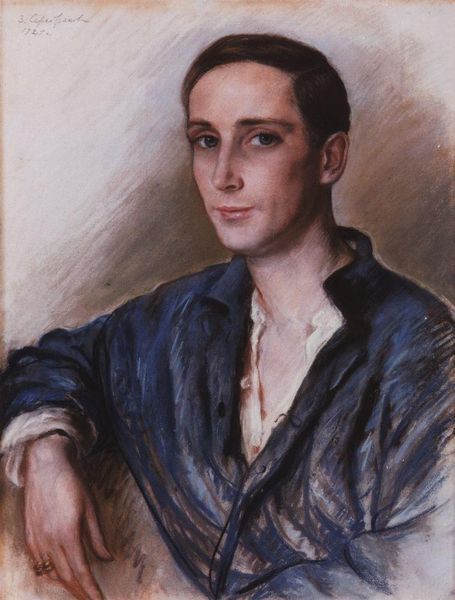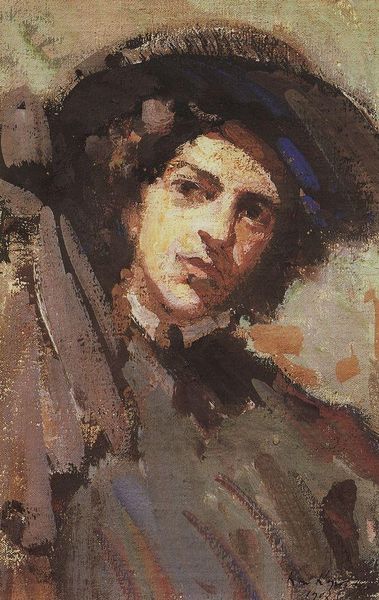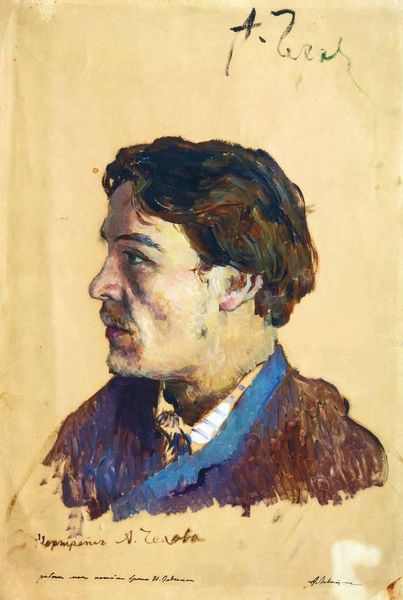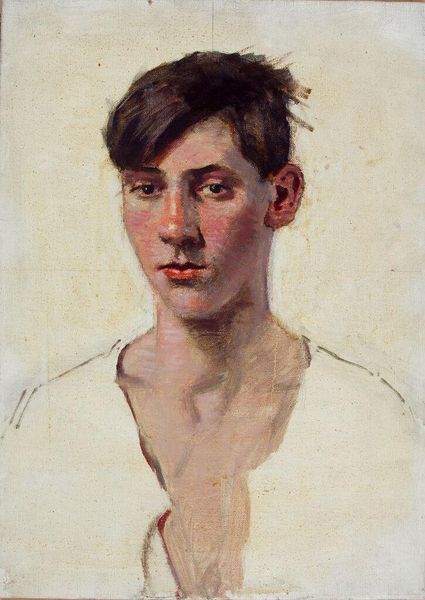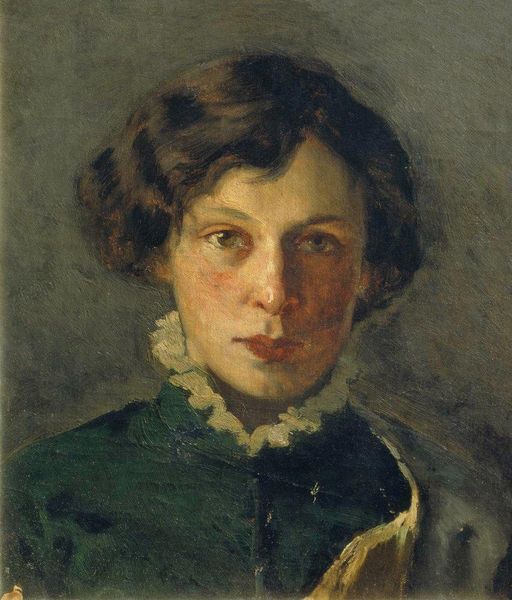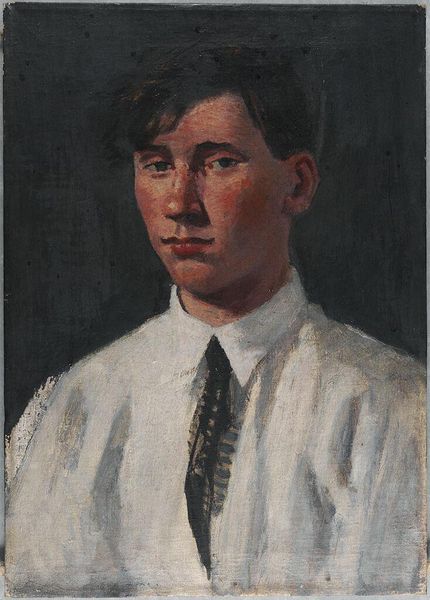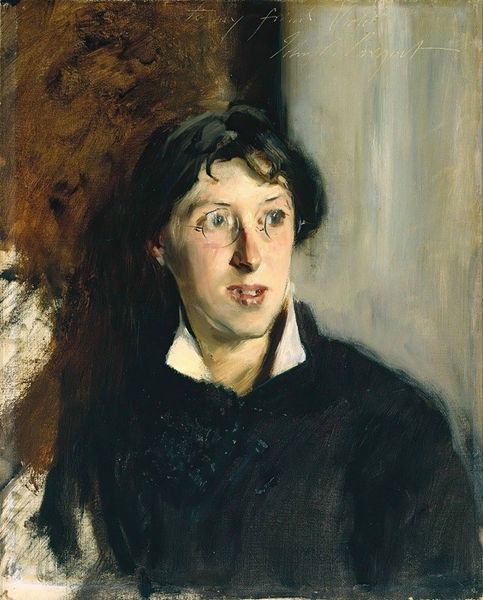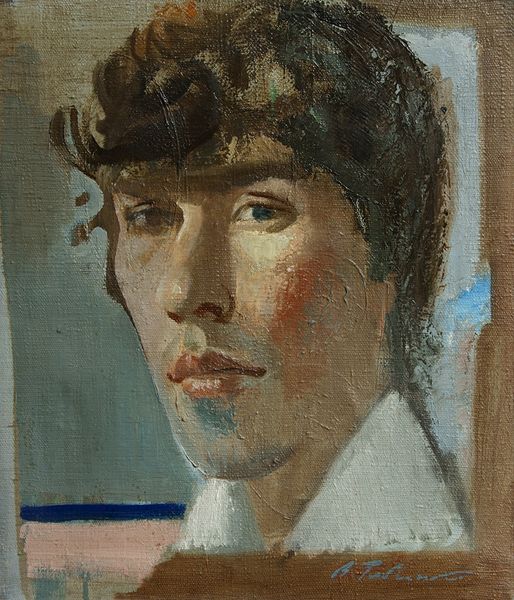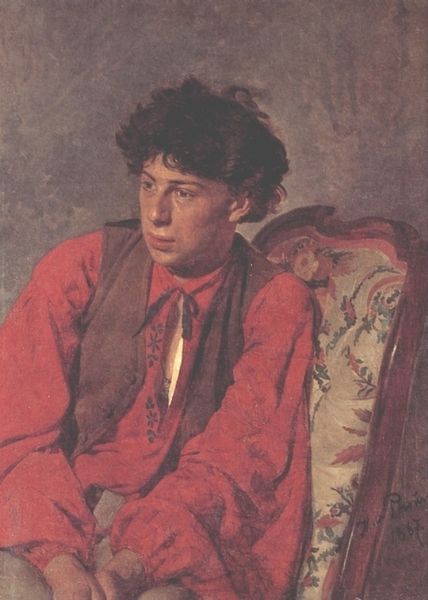
painting, oil-paint
#
portrait
#
painting
#
oil-paint
#
oil painting
#
russian-avant-garde
#
portrait art
#
realism
Copyright: Public domain US
Editor: We’re looking at Zinaida Serebriakova’s “Portrait of G.I. Chulkov” from 1910, an oil painting. It's…intimate, I guess, but also somewhat distant. The blue shirt dominates, and he's got his arms crossed, creating this reserved mood. How do you interpret this work, especially considering it was painted during the Russian Avant-Garde movement? Curator: Well, let's consider the subject, Chulkov. He was a prominent figure in the Symbolist movement in Russia, which itself was deeply invested in the idea of hidden meanings and veiled truths. Serebriakova, consciously or unconsciously, captures something of that veiled quality. Note how the background seems unfinished, raw – is that a visual metaphor for the unexplored depths of the human psyche? Editor: That’s interesting, I hadn't thought about the unfinished background as symbolic. I was more focused on the straightforward realism of the portrait. Curator: But is it truly straightforward? Look at the color choices, the almost melancholic blue, the way the light catches his face, emphasizing a certain vulnerability. This isn’t just a likeness; it's an interpretation. Even the act of portraying a symbolist is pregnant with meaning. One wonders what Serebriakova, breaking free as a woman artist, thought of Chulkov’s ideas on mystical anarchism. Does she imbue him with those qualities, or critique them? Editor: So you’re suggesting that even within a portrait, she could be subtly engaging with intellectual currents of the time, imbuing them with symbolism? Curator: Absolutely! Portraits aren't mere snapshots; they’re often deliberate constructions of identity and cultural meaning. And remember, even “realism” is a symbolic choice in art! What do you think about that, thinking about today’s audience? Editor: I think I was too quick to judge it based on surface appearances. There’s a lot more going on beneath the surface, a conversation about symbolism itself being portrayed. Curator: Precisely. The painting, ultimately, isn't just about Chulkov. It’s about how Serebriakova positions herself, and the viewer, in relation to a complex web of ideas and symbols. Editor: That makes me want to explore other portraits from that period; this painting really has a lingering quality, after you realize all it contains.
Comments
No comments
Be the first to comment and join the conversation on the ultimate creative platform.
